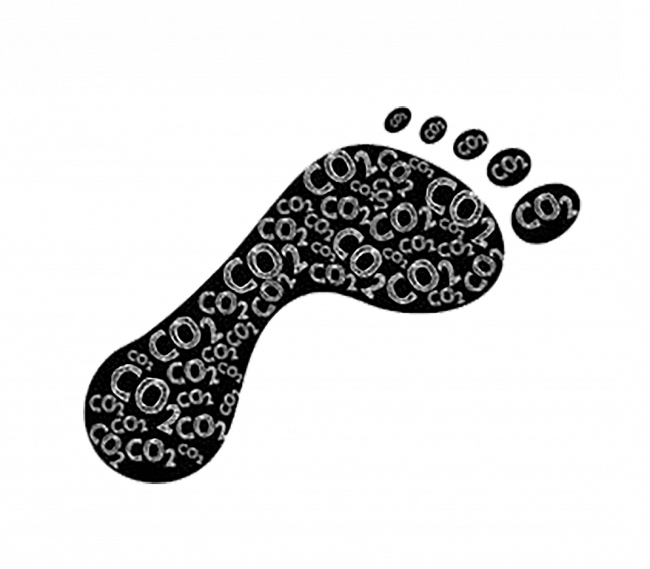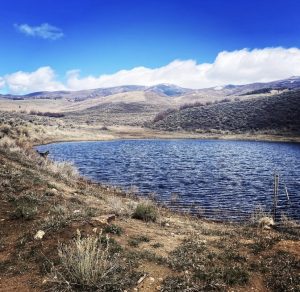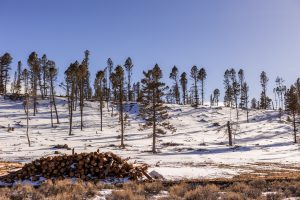ARE YOU BIG FOOT THRASHING through the wilds or are you Tiny Tim tiptoeing through the tulips?
Any number of carbon footprint scoring mechanisms can be found on the internet. With a simple search you will be inundated — government agencies, conservation groups and energy/utility companies offer calculators. Some are simple and some are complex. Cruising through some of the websites, obviously there are numerous algorithms and a lot of math in the background that the average user cannot see, let alone understand.
The original household carbon footprint calculator was devised in 2004 by the New York City-based advertising and marketing firm Ogilvy. This propagandist public relations agency was hired by British Petroleum as part of a campaign to shift responsibility of climate change-causing pollution away from corporations and industry to the citizenry and their personal lifestyle choices. Climate change is a proven reality, and it is here to stay. Deniers are a proven reality and, unfortunately, are here to stay as well. How is it that the natural environment has become politicized?

A carbon footprint is the aggregate sum of greenhouse gas (GHG) emissions generated by a person, business, industry or other “consuming” circumstance. Usually GHGs are expressed as carbon dioxide equivalent, or CO2e. GHGs are gasses that accelerate atmospheric warming with a roster of seven that are the focus of environmental protocols and eco-activists. These are: carbon dioxide (CO2), methane (CH4), nitrous oxide (N2O), hydrofluorocarbons (HFCs), per-fluorocarbons (PFCs), sulfur hexafluoride (SF6), and nitrogen trifluoride (NF3). Typically, carbon dioxide and methane are in the mainstream media’s news headlines.
Carbon dioxide from fossil fuels and industrial processes accounts for 65% of the GHG tally. Also for carbon dioxide, another 11% is from forestry and other land-use practices. Methane tallies 16%, nitrous oxide, 6%, and the various fluorocarbon gasses, 2%. GHG source data and emissions tallying vary widely. From the “burning” of fossil fuels, oil accounts for 46%, natural gas 34%, and coal 21%. These fossil fuels account for 80% of the excess anthropogenic carbon dioxide in the atmosphere. For the economic sectors, transportation accounts for 27%, electricity 25%, industry 24%, commercial and residential 13%, and agriculture 11%. Looking at the electricity sector by itself, coal accounts for 58% of this sector’s GHG emissions, natural gas, 40%, and oil, 2%.
Globally, it has been estimated that the average person generates about 5 metric tons of carbon dioxide emissions each year. According to The Nature Conservancy, in the U.S. it’s more than three times that number — 16 metric tons. Comparatively, the United Nations Development Programme’s score for America is 21 metric tons. America’s per capita carbon footprint is larger than that of most nations, including Canada, Russia, Germany, Japan, China, United Kingdom, France, Brazil, and India — no surprise considering the average U.S. citizen’s comparatively extravagant lifestyle and consumerism.
Standard parameters for scoring a carbon footprint include: transportation and travel, housing and home, food and eating habits, and shopping or consumerism. The scoring (regardless of the calculator) is a rough estimate at best due to lack of understanding of the synergies and chemical interaction complexities. When using any calculator, seemingly there is also bias inherent to one’s lifestyle and geography. I see this bias when I derive my score living in a rural area as compared to a person living in Denver. Am I being penalized by the calculator because I am not riding a bus for my commute instead of my own gas-guzzling (33 mpg) vehicle? Am I penalized because my drive to the airport is four hours?
If you choose to wend your way through any mechanism or calculator, then remember, GIGO, or “garbage in, garbage out” with respect to your input of data. Some calculators ask very specific and quantitative questions for their input. Others have sliding scale ranges. At a minimum, have handy your energy usage data and vehicle information. Some calculators have options for your utility bill — dollars spent versus kilowatt-hours (kWh) consumed. Use kWh if you can. Look at your billing statements — in my case for co-op electricity, the actual energy charge is less than half of the total charges due.
Some calculators simply give a score upon pressing the button of your last input entry. Some provide a running tally as you progress through each of the parameters like home energy, transportation and wasteful habits. One calculator actually indicates how many mature adult trees (424) are needed to offset my lifestyle. Another calculator indicates how many planet Earths (2.4) would be needed to accommodate the entire population if everyone were equal to me. Most all of the calculators offer suggestions and recommendations for improving your lifestyle and habits.
According to one group and their particular calculator, the five most significant contributors to one’s yearly carbon footprint are family size, transportation, heating and cooling, food, and laundry. Under family size, each child adds 58 tons CO2e to your footprint. For transportation, your car adds 2.4 tons, your single transatlantic flight, 1.6 tons. Heating and cooling your home adds 1.5 tons. Under food, meat eaters (especially beef) get almost an additional ton. Washing and drying your clothes adds about half a ton of CO2e. Obviously, these are very generic values and don’t tell the whole story for anyone’s lifestyle.
If you choose to estimate your carbon footprint, use more than one calculator. If you use only one (like the one above), the suggestions offered will be of little value.
At any rate, don’t have children, don’t drive or fly, freeze in the winter, swelter in the summer, become a vegetarian, and don’t do laundry. Yeah, right, sure. How’s that working out for you and your family? As for me and the size of my footprint — it’s an 8 medium.
Bill Christie holds his breath while treading lightly in the wilds of Custer County.



